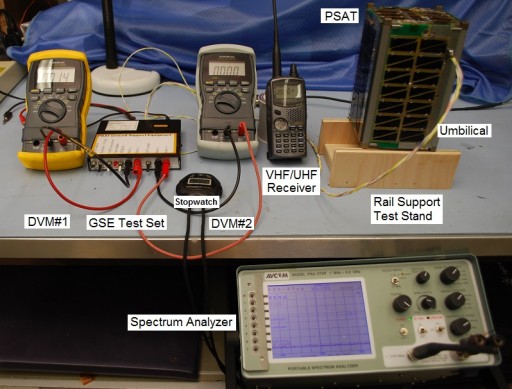PSAT-A

The PSAT Project (ParkinsonSAT) has been developed by students at the US Naval Academy Satellite Lab as a two-way communications transponder system that could be used to relay data from remote terminals to a global network of internet linked volunteer ground stations to speed up the return of data from remote environmental sensors, and other experiments that are installed in remote locations to the operators of the experiments.
Each PSAT is based on the 1.5U form factor using solar cells for power generation and a 10-Watt-hour battery plus passive magnetic torquer attitude control. The solar cells are installed on body-mounted solar panels that are oriented towards the sun by the satellite’s attitude control system using a passive mechanism consisting of a highly reflective strip on the clockwise edge so that the satellite enters a slight spin around the z-axis to ensure even charge of the battery strings from each of the four solar panels. A single magnetic torquer on the z-axis of the satellite allows the spacecraft to be aligned with Earth’s magnetic field to keep the side panels within a +/-23-degree corridor to the sun.
The two PSAT satellites host a AX.25 Packet Radio Relay system based on the Automatic Packet Reporting System which has been used in previous CubeSat applications and demonstrated the distribution of data packets to users worldwide via the global network of volunteer ground stations feeding data straight to the Internet. Additionally, the PSAT spacecraft are equipped with a PSK31 transponder that allows multi-user access to the satellite. This text messaging transponder can allow messaging between 30 ground stations simultaneously. The systems operate using the standard VHF (145MHz) and UHF (437MHz) frequencies for up and downlink.
